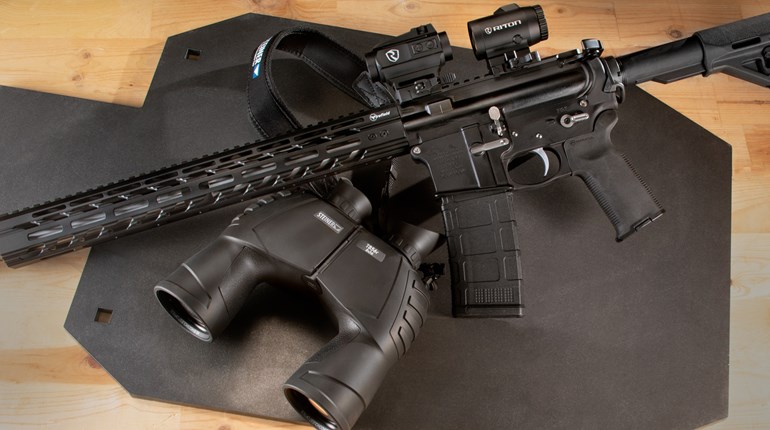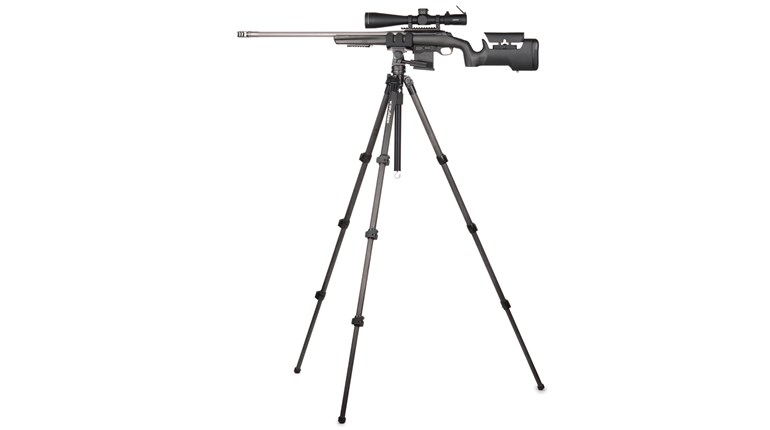
Change is a good thing, right? I guess it depends on your perspective. Bald tires, baby diapers and multi-term politicians all need to be swapped out as soon as they have outlived their usefulness. But, human nature takes over when life tries to pull us out from under the warm blanket of “if it ain’t broke, don’t fix it.” Buy some new dress slacks you say? No need—my parachute pants will iron up just fine. Trade in ground beef for quinoa? Now you’re just being silly. Bottom line: We like our comfort zones. That extends firmly into our shooting tendencies, too. Every circle of gun friends has a token “gear commando.” You know, the one who is first to own the latest gadget, caliber or performance gear while the rest of us are slow to migrate away from the tried and true.
The reasons are practical as well as mental. Few people want to switch their go-to rifle (or handgun or shotgun) to a different style or caliber when they are sitting on a bunch of ammo and accessories for one that already works well. Add to that the cost, time and effort needed to learn a new cartridge or operating system and suddenly that shiny new object loses much of its luster. But, simply clearing up misconceptions does not have to involve completely changing what and how we shoot. Sometimes just understanding that accepted “facts” are not so factual can help move us along in the right direction.
A good example is the myth that short barrels are unsuitable for long-range shooting. Anyone who has ever done a “walk-back” drill with a handgun knows you can hit things pretty darned far away once you figure out your hold-overs and apply the fundamentals. The same is true for pistol-caliber carbines and short-barrel rifles. The kicker is that hitting something is not the same as having the desired effect on it. This applies mainly to hunting and defensive/offensive scenarios where we need to do more than simply register hits on steel or paper. As a military sniper, I always knew the maximum ranges at which I could hit someone, but I was less confident that match bullets would incapacitate them at those ranges. Fortunately, bullet technology is such that today’s expanding projectiles are increasingly capable of opening up at slower velocities, so longer practical engagement ranges are now possible.
Short-barrel guns in rifle calibers can shoot very accurately out to mid-ranges, too, which challenges the old ways of thinking a bit. Heck, I am living proof of this in action. A few years ago I was hunting with an 18-inch-barreled .308 Win. After one year I scaled down to a 16-inch barrel and then a 16-inch 7.62x39 mm a year later. This past hunting season I used an accurate, 11.5-inch-barreled 7.62x39 mm AR. A whole bunch of folks I know have followed similar trajectories over the past few years, moving from rifle to carbine to short-barrel rifle or rifle-caliber pistol.
Barrel twist rates have also suffered from a long running case of Theoria torpor. Twenty years ago, barrels with twist rates of 1:11 and 1:12 inches were standard fare in military and law enforcement 7.62 NATO sniper rifles. As the precision shooting world shifted toward the heavier end of the bullet-weight spectrum, the 1:10-inch twist rate eventually took hold and was long considered the ideal twist for tactical .308s. But as more long-range shooters discover the benefits of tighter twists, such as 1:8, that wisdom is gradually falling by the wayside for multiple .30-caliber chamberings. The same holds true in the 5.56 NATO realm, where the most common 1:8- and 1:7-inch twists still rule the roost. Some seriously good shooting is happening with .22-caliber barrels using 1:6-inch (and tighter) twists these days.
One of the factors that drove looser twists in years past was that jacketed bullets had a tendency to come apart in the air. Rates-of-spin exceeding that which bullets could handle caused lead cores to separate from jackets and all bets on point-of-impact were off from that point onward. Modern bullet technology uses far-superior bonding techniques for bullet components and a growing number of solid projectiles eliminate any worries about this core-stripping. You can still over-spin a bullet, but so long as the right design is used, the problem will be decreased accuracy instead of a shot that seems to disintegrate between you and the target.
Tighter twists better stabilize the longer/heavier bullets commonly used for subsonic ammunition. Long-range testing in recent years has shown that tight twists often yield better external ballistic performance, too. That translates to longer supersonic ranges, less drop from the line of bore as compared to bullets fired from traditional twist rates and a greater ability to “buck the wind” due to faster downrange velocities and flatter trajectories.
A final myth worth dispelling is that subsonic-rifle cartridges are inherently inaccurate. That might have been true in the days when we simply loaded lower amounts of conventional powder in full-size rifle cases—leading to inconsistent velocities—but it is not true today. Specialty powders combined with purpose-built cartridges like .300 Whisper/BLK or those with already-small smaller case volumes (such as 7.62x39 mm) lend themselves well to keeping velocities much more uniform from shot to shot. Combining tighter twists with the long/heavy bullets used in these subsonic loads can yield some very good accuracy. I routinely see 100-yard groups in the .75- to 1-inch range with at least one subsonic factory load in each of the .30-caliber guns I shoot. Even in looser twists, I get 1- to 1.25-inch groups from marginally stable subsonic bullets, which is still adequate for home defense and hunting.
Upgrading old notions that have been holding you back may improve your shooting performance in several directions at once. Certainly, do not discard good habits, safe practices or simply things that work for you just for the sake of change, but also don’t cling to the past out of nostalgia’s sake. You do not necessarily need to run out and buy the newest, shiniest object, but go ahead and swap out that vintage Members Only jacket in your closet—that’s one upgrade worth making without any further deliberation.



































